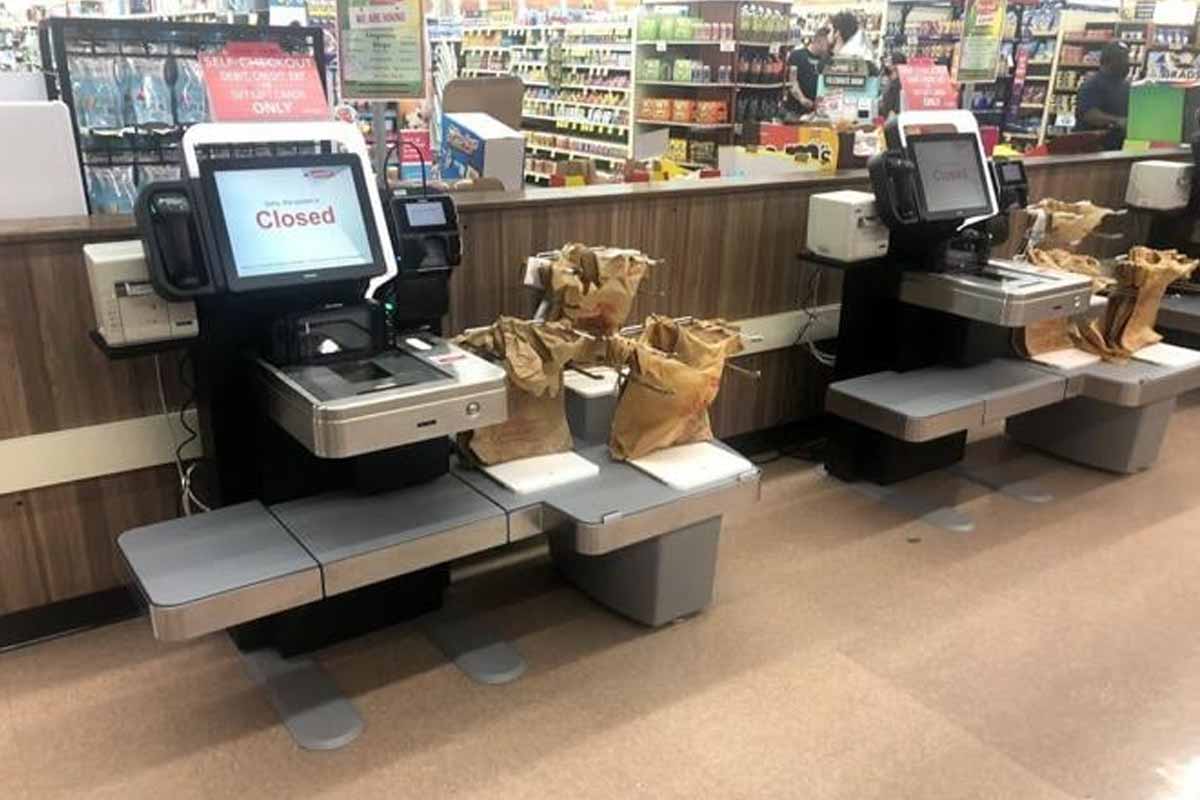Long Beach Vons just pulled the plug on self-checkout, and the aisles feel different. You can hear the small talk again. Baggers swap tips about ripe avocados. Cashiers greet by name, not barcode. It’s a throwback vibe, born from a brand-new rule.
Lights On, People Present
The city drew a line and asked stores to meet it. The “Safe Stores are Staffed Stores” ordinance insists on real eyes near the machines. One employee for every three self-checkout lanes. Clear as a price tag. Shoppers with big carts must head to a staffed register, capped scanners beeping for baskets under fifteen items. Anything that needs ID? That’s a no-go at a kiosk. Same for goods locked behind plastic or wired to shelves. Four stores shut their kiosks as Long Beach Vons adjusted on the fly. Managers walked the floor, counted lanes, counted heads, and made a call. The idea isn’t to punish shoppers. It’s to keep people safe, especially the workers who stand between a crowded aisle and someone spoiling for trouble. A rule like this sounds dry on paper. In the store, it’s human. At Long Beach Vons, locked or age-restricted items can’t pass a scanner unchecked. That’s not fussy. That’s accountable.
Long Beach Vons
Here’s the heartbeat. Staff spend less time sprinting between blinking screens and more time with actual people. A cart jams. They help. A barcode won’t scan. They help. Big deal? Ask an older customer who felt stranded at a kiosk, cheeks burning while the light flashed. The ordinance gives workers room to notice and respond. It also puts space between a harassed cashier and the person looking to bully. The union sees it as a chance to slow theft, not with lectures, but with presence. When a worker stands nearby, it changes the air. You feel watched in the decent way, the every-store-needs-eyes way. That calmer rhythm sells more than groceries. It restores trust in the small gestures that keep a neighborhood market honest. The brand carries weight here, so Long Beach Vons can set a tone the block recognizes and repeats.
Money, Machines, and Trust
Let’s talk about why self-checkout exploded. Automation looked tidy on a spreadsheet. Fewer people on the schedule, more machines at the edge of the deli line. The open secret, said a union voice, was simple: make fewer workers do more. That math works until it doesn’t. When shrink creeps up, all the savings melt. When shoppers feel alone at a glitchy kiosk, they don’t hurry back. A company spokesperson said closing the lanes made sense. Locked items can’t be scanned at self-checkout, and the rule is the rule. You may not love the detour to a cashier. You might sigh and check your watch. Then the line moves, a human catches your eye, and the moment softens. People remember that the store is a place, not a vending machine. Habits change. Trust crawls back in. For the neighborhood around Long Beach Vons, that trust is worth more than the hum of unattended screens.
The People Behind the Counters
Policies are only as good as the folks who carry them. Council voices talked about safety, not as a slogan, but as daily reality. Cashiers face riders who shove, shout, or test the edges. Managers step in and absorb the heat. This ordinance hands them backup. One person can’t guard a wall of machines and keep grace under fire. Three lanes per employee feels like a livable ratio. It gives workers breathing room and keeps hands free for customer help. You can feel the tone shift when attention returns to service. A shopper with questions meets a grin, not a red light. A parent juggling snacks and a toddler gets a bag packed right. The store becomes less brittle. Less frantic. The change didn’t land perfectly across every corner, and some grumbled. That’s retail. Still, the path makes sense in the long run for Long Beach Vons, where neighbors notice the difference and talk about it later at dinner.
What Comes Next, and Why It Matters
Technology isn’t the villain. It just needs a partner. A smart lane can count items and speed a quick trip. A smarter team can spot the moment when a simple scan becomes a headache. One day, machines will handle more nuance. Today, they need chaperones with a smile and a spine. A business professor put it plainly: let automation complement human work. That’s the sweet spot. Not replacing people, but boosting them.
Picture a floor plan where kiosks handle tiny hauls, and staffed lanes welcome everything else. Picture training that turns screen-watchers into guides. Show the math of safer stores and steadier margins. Publish the wins and the slipups. Keep the conversation open, even when it stings. That’s how a policy grows into culture. It starts at the checkout and spreads to the dairy case, the pharmacy window, the bakery counter. And yes, it stretches across the street to the parking lot, where the last impression lives. If the city holds its nerve, and stores stay transparent, shoppers will adapt. They already are. The new rhythm feels a little slower, yet far kinder. You grab dinner, swap a joke with the cashier, and step back into the night. That’s retail at its best, almost invisible and always there. The story is still being written at Long Beach Vons, with people on the page again.
